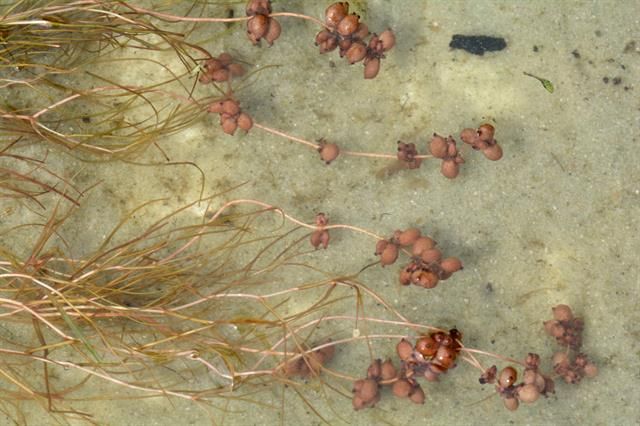Stuckenia
|
Family: Potamogetonaceae |
Herbs: rhizomes present; turions absent; tubers absent or present. Stems terete, nodes without oil glands. Leaves submersed, alternate, opaque, sessile, linear, channeled, turgid, acute at base acute, margins entire, apex obtuse to acute, veins 1--5; stipules not tubular, adnate to base of leaf blades for 2/3 or more length of stipule, extending past adnation as free ligule. Inflorescences spikes, capitate or cylindric, submersed; peduncles flexible, not projecting inflorescence above surface of water. Flowers: pistils 4. Fruits abaxially rounded, beaked or not, turgid; embryo with less than 1 full coil. x = 13. The stipules of Stuckenia are adnate to the blade for two-thirds to nearly the entire length of the stipule. The few species of Potamogeton with adnate stipules have the adnation less than half the length of the stipule, in fact, less than 4 mm. Submersed leaves of Potamogeton are translucent, flat, and without grooves or channels, whereas those of Stuckenia are opaque, channeled, and turgid. A proposal to elevate Potamogeton subgenus. Coleogeton to the generic level, retaining the name Coleogeton, was presented (D. H. Les and R. R. Haynes 1996). Potamogeton pectinatus Linnaeus was chosen as the nomenclatural type. The name Stuckenia had been previously published, however, and P. pectinatus cited (C. Börner 1912), making the generic name Coleogeton superfluous. Stuckenia is the correct name, and the appropriate specific combinations have been made (J. Holub 1997).
|

